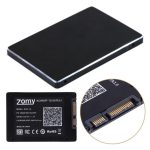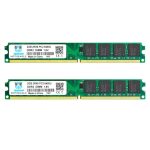What is a Compact Flash Card?
Compact Flash (CF) cards are a type of flash memory. They store photos and videos for cameras. These cards are durable and have large storage capacities. Photographers use CF cards because they write data fast. This makes them great for high-resolution images and video. CF cards come in different sizes and speeds. You can find them in most cameras before the mirrorless and DSLR revolution. Today, they still serve in high-end photography equipment. Their solid build quality makes them reliable in tough conditions. To read the data, you need a compact flash reader. This device transfers files from the CF card to a computer. Using a reader allows for quick access to the images and video. It’s essential for editing and archiving work. Overall, CF cards are a trusted choice for serious photographers.

Different Types of Compact Flash Readers
When shopping for a compact flash reader, you’ll encounter various models. Each type offers unique features and benefits. Let’s explore the common types available.
Single-Slot Compact Flash Readers
These readers have one slot for CF cards. They are portable and easy to use. If you only need to read CF cards, they are a cost-effective option.
Multi-Slot Readers
Multi-slot readers can handle different memory card formats. They are ideal for photographers who use various types of cards. Typically, they include slots for SD cards, microSD cards, and sometimes even xD-Picture cards.
High-Speed Readers
For professionals, speed is crucial. High-speed compact flash readers support faster data transfer rates. They leverage USB 3.0 or even Thunderbolt connections. This minimizes the time spent transferring large photo and video files.
Wireless Readers
Wireless compact flash readers offer convenience. They allow you to transfer files without a cable. Some connect to Wi-Fi networks for seamless file sharing. This is great for photographers on the move.
Built-in Card Readers
Some computers come with built-in CF readers. These are integrated into the desktop or laptop. They save you from carrying an external reader. However, their speeds and compatibility may vary.
When selecting a compact flash reader, consider compatibility, speed, and your workflow needs. Remember, a reliable CF reader is a key tool for any photographer. It ensures the smooth transfer of high-quality images and videos to your computer for editing and storage.
Key Features to Look for in a CF Reader
When selecting a compact flash reader, certain features enhance your experience. Here are some key aspects to consider:
Compatibility
Ensure the CF reader supports your CF cards and any other memory cards you use. This prevents compatibility issues during data transfer.
Transfer Speeds
Look for a reader that supports high-speed data transfer. This saves time, especially when dealing with large files.
Portability
A compact and lightweight reader is ideal for photographers on the go. It’s easier to carry and use anywhere.
Durability
Choose a sturdily built CF reader. It should handle wear and tear, especially if you often work outdoors.
Additional Slots
A reader with multiple slots is useful if you use various types of memory cards. It makes the reader more versatile.
These features ensure an efficient and reliable performance from your compact flash reader. They help manage your photography workflow effectively.

How to Use a Compact Flash Reader
Using a compact flash reader is straightforward but essential for photographers. Here’s how you can make the most of your compact flash reader.
- Connect the Reader: First, plug your CF reader into your computer’s USB or Thunderbolt port. Most readers are plug-and-play devices, which means they don’t require additional software.
- Insert the CF Card: Next, insert the CF card into the reader. Ensure it is seated correctly and oriented properly according to the reader’s slot design.
- Transfer Files: Once the card is recognized, you can access the files. Open your file explorer on the computer. Locate the removable disk, which represents the CF card. From here, you can copy or move images and videos to your computer.
- Safely Remove the Card: After transferring the files, make sure to eject the card properly. In your computer’s file explorer, right-click on the removable disk icon and select ‘Eject’. This ensures that no data is being transferred when you remove the card.
- Store Your CF Card Safely: Always store your card in a safe, dry place when not in use to protect it from damage.
Using your compact flash reader correctly ensures a smooth workflow and long lifespan for both your reader and CF cards.
The Role of CF Readers in Photography Workflows
Compact flash readers play a vital role in photography workflows. They bridge the gap between capturing high-quality images and preparing these files for editing and storage. A CF reader is indispensable for transferring large batches of images quickly. This helps maintain an efficient, productive workflow.
For photographers, every second counts, especially when working on tight deadlines. Fast data transfer speeds can significantly cut down the time between shoots and post-production. This is where a good CF reader steps in. It ensures that photographers can move files swiftly to their computers or storage devices.
During events like weddings or sports, quick access to images is key. Photographers need to show previews to clients or deliver swift updates to media outlets. Reliable CF readers allow for the quick transfer of files, which is critical in these scenarios.
Moreover, when photographers are out in the field, they can’t afford delays due to file transfer issues. A durable and portable CF reader that withstands outdoor conditions is important. It needs to work consistently in various environments, ensuring that no part of the workflow is hindered by technical failures.
Lastly, for those working with multiple memory card formats, a multi-slot CF reader simplifies the process. It eliminates the need for multiple readers and streamlines the workflow, making it a smart choice for versatility and convenience.
In summary, the integration of a compact flash reader into a photographer’s workflow is pivotal. It supports quick data transfers, enhances productivity, and provides reliability when it is most needed. For professional photographers, investing in a high-quality CF reader is a decision that pays off in the smooth sailing of their daily tasks.
Best Practices for Maintaining Your CF Reader
Proper care and maintenance of your compact flash reader are essential for maximizing its lifespan and performance. Here are some best practices to ensure your CF reader remains in top condition:
- Keep It Clean: Dust and debris can affect the reader’s performance. Use a soft, dry cloth to gently wipe the exterior and the slot area.
- Avoid Exposure to Extreme Conditions: Do not expose the CF reader to extreme temperatures, moisture, or direct sunlight. Such conditions can cause damage or affect functionality.
- Handle with Care: Be gentle when inserting and removing CF cards. Forcing a card into the slot can damage both the card and the reader.
- Eject Properly: Always use the ‘Eject’ option on your computer before removing the CF card. This prevents data corruption and damage to the reader’s slots.
- Use Protective Cases: When not in use, store your CF reader in a protective case. This reduces the risk of physical damage and keeps it clean.
- Update Software Regularly: If your CF reader uses any specific software, ensure it’s updated. Software updates can enhance performance and compatibility.
- Avoid Multiple Connections: Disconnect other USB devices when using the CF reader. This prevents power surges and interference that might impair functionality.
By following these simple yet effective maintenance tips, you can extend the life of your compact flash reader and maintain its efficiency for all your photography needs.
The Top Compact Flash Readers for Professional Photographers
Professional photographers need reliable equipment, including the right compact flash reader. Here are the top picks tailored for pros.
Unitek USB 3.0 Multi-in-1 Card Reader
This reader supports high-speed data transfer with USB 3.0. It’s compatible with various card types, making it versatile for photographers who use different cameras.
SanDisk Extreme PRO CFast 2.0 Reader/Writer
Designed for high-volume work, this reader offers top-notch speed and efficiency. The CFast 2.0 technology makes it future-proof for newer CF card types.
Kingston Digital USB 3.0 Super Speed Multi-Card Reader
With its USB 3.0 support and durability, Kingston’s reader can handle frequent use in any work environment. Its multiple card slots offer convenience and flexibility.
Lexar Professional USB 3.0 Dual-Slot Reader
Lexar’s reader boasts high-speed file transfer and is designed for pros who need to quickly move large files. The dual slots are perfect for CF and SD cards.
ProGrade Digital CFast 2.0 and SD UHS-II Dual-Slot Card Reader
This reader is built for speed and efficiency. With its concurrent transfer ability, it saves time by handling CFast and UHS-II SD cards simultaneously.
These compact flash readers stand out for their performance and robust design. Always consider factors like compatibility, transfer speeds, and convenience when choosing a CF reader. Investing in a top-notch reader is key to ensuring a smooth photography workflow.

Compact Flash vs. Other Memory Card Formats: Pros and Cons
When comparing Compact Flash (CF) cards to other memory card formats, such as SD or microSD cards, it’s important to weigh their pros and cons. This section will help photographers choose the right storage medium for their needs.
Pros of Compact Flash Cards
- Durability: CF cards are tough and withstand rough handling better.
- Speed: They offer fast write speeds, ideal for high-res photos and videos.
- Capacity: CF cards provide large storage options for professional use.
- Construction: Their larger size makes them less prone to loss or damage.
- Legacy Equipment: CF cards work well with older, professional cameras.
Cons of Compact Flash Cards
- Size: CF cards are bulkier compared to newer formats.
- Cost: They can be pricier than SD or microSD cards.
- Availability: Fewer consumer cameras support CF cards now.
- Compatibility: Many modern devices favor SD/microSD cards.
Pros of SD and microSD cards
- Convenience: They are small, easy to carry, and use.
- Ubiquity: Most modern devices have built-in SD card slots.
- Affordability: They are generally less expensive than CF cards.
- Flexibility: microSD cards fit into SD adapters for versatile use.
Cons of SD and microSD cards
- Fragility: These cards are more delicate and can break easier.
- Risk of Loss: Their small size makes them easy to misplace.
- Speed: Lower-end models may have slower write speeds.
- Security: They may not offer the secure features of CF cards.
In conclusion, the choice between CF and other memory card formats depends on specific needs. Consider factors like the type of camera, the nature of photography, and the workflow requirements. Some photographers might favor the ruggedness of CF cards while others prefer the compact size of SD/microSD cards. Weighing these factors will guide you to the memory card that best serves your photographic endeavors.

